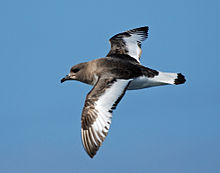Scullin Monolith


TheScullin Monolithis a crescent-shaped rock fronting the sea 6 km (3.7 mi) west of the similarMurray Monolith,and 8 km (5.0 mi) fromTorlyn Mountain,inMac. Robertson Land,Antarctica.It is a steep massif of metasedimentarygneissandgraniticorigin, with the adjacent coastline consisting of 40 m high ice cliffs. The monolith rises steeply to extend from 435 m highMikkelsen Peakwestward in a crescent that forms Douglas Bay.[1]
Discovery and naming
[edit]Early in January 1930 theBritish Australian New Zealand Antarctic Research Expedition(BANZARE) underDouglas Mawsonmade an aerial flight from the ship over the area. Mawson set foot on the rock on 13 February 1931 and named it forJames Scullin,Prime Minister of Australiain 1929 - 31.[2]The rock was charted in January and February 1931 from Norwegian whale catchers exploring the coast, and named "Mount Klarius Mikkelsen" for Captain Klarius Mikkelsen, master of the whale catcherTorlyn.Mikkelsen Peakis retained as the name of the highest peak of the outcrop.
Antarctic Specially Protected Area and Important Bird Area
[edit]As it is not covered in snow or ice, it is an important breeding ground for birds, particularlypetrels.[3]Together, Scullin and Murray monoliths hold the greatest concentration ofseabirdbreeding coloniesin East Antarctica, including at least 160,000 pairs ofAntarctic petrelsand 70,000 pairs ofAdélie penguins.They are protected under theAntarctic Treaty SystemasAntarctic Specially Protected Area(ASPA) No.164.[4]Coincident in coverage with ASPA 164, the two monoliths have also been designated anImportant Bird Area(IBA) byBirdLife Internationalbecause of the significant seabird colonies present.[1]
References
[edit]- ^ab"Scullin Monolith / Murray Monolith".BirdLife Data Zone.BirdLife International. 2015.Retrieved27 November2020.
- ^"Antarctic Gazetteer: Scullin Monolith".Australian Antarctic Division.Retrieved2008-01-26.
- ^"Scullin Monolith: Topography and bird distribution".Australian Antarctic Division.Retrieved2008-01-26.
- ^"Scullin and Murray Monoliths, Mac.Robertson Land, East Antarctica"(PDF).Management Plan for Antarctic Specially Protected Area No. 164: Measure 2, Annex N.Antarctic Treaty Secretariat. 2005.Retrieved2013-01-24.
External links
[edit]- Scullin MonolithonUSGSwebsite
- Scullin MonolithonAADCwebsite
- Scullin MonolithonSCARwebsite
- Scullin MonolithatLonely Planetwebsite
- Scullin Monolithat peakvisor website
- Long term weather forecast
 This article incorporatespublic domain materialfrom"Scullin Monolith".Geographic Names Information System.United States Geological Survey.
This article incorporatespublic domain materialfrom"Scullin Monolith".Geographic Names Information System.United States Geological Survey.
67°47′S66°42′E/ 67.783°S 66.700°E

